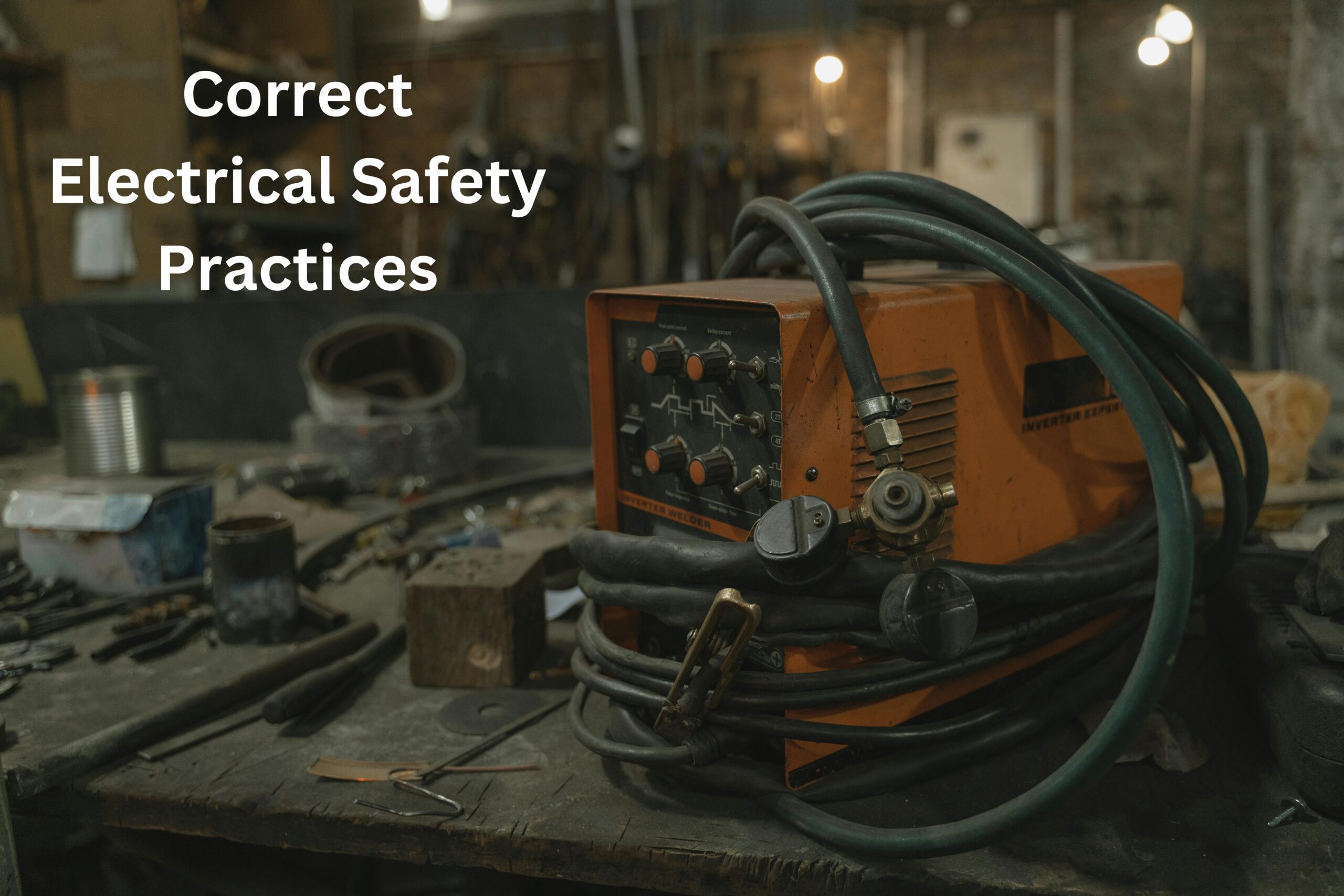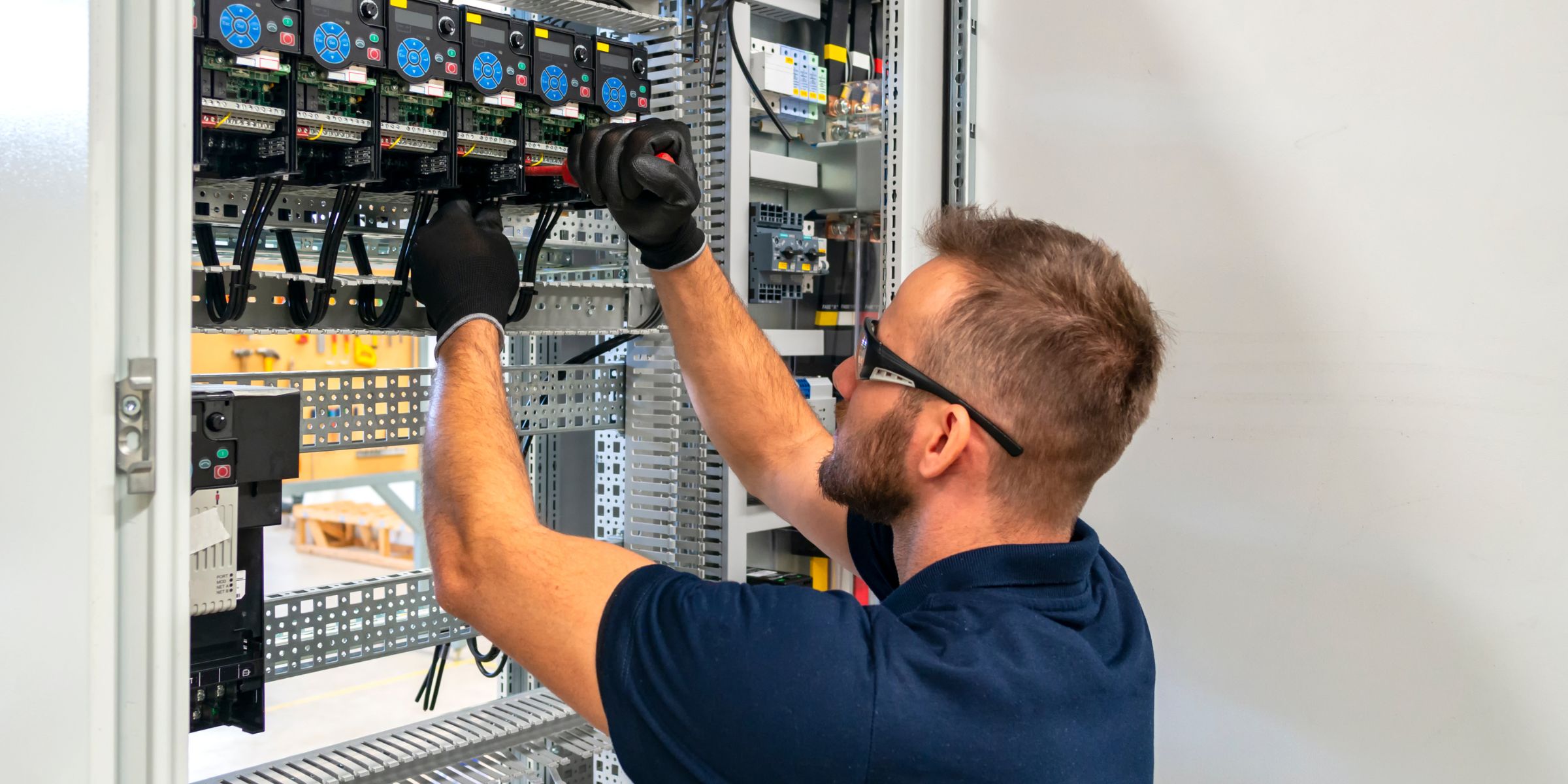10 Safety Rules in Electrical, Electricity is a big part of our lives, but it can be dangerous if handled correctly. It’s important to follow key safety rules to protect yourself and others when dealing with electrical systems. This guide shares 10 vital safety tips for the electrical field. These tips will help you avoid accidents and stay safe at work.
Key Takeaways
- Understand electrical hazards and potential risks to stay informed.
- Use proper protective equipment to safeguard against electrical shocks and burns.
- Follow lockout/tagout procedures to ensure equipment is properly isolated and de-energized.
- Maintain a clean and organized workspace to reduce the risk of accidents.
- Ensure proper grounding and bonding to prevent static electricity buildup.
Understanding Electrical Hazards
Working with electricity is crucial but also risky if you don’t follow safety rules. It’s key to know the electrical hazards to keep yourself and others safe.
Identifying Potential Risks
Some big risks include electric shocks, arc flashes, and electrical fires. Electric shocks happen when you touch a live wire. Arc flashes are huge bursts of heat and light that can burn you badly. Fires start when wires get too hot or damaged wires spark.
Common Electrical Accidents
Common electrical accidents can be very dangerous. They might cause you to fall from heights, get burned by arc flashes, or start fires. These fires can damage buildings and even cause death.
Knowing about electrical hazards and risks is vital for a safe work area. It helps prevent common electrical accidents.
| Electrical Hazard | Description | Potential Consequences |
|---|---|---|
| Electric Shock | Contact with a live electrical source | Muscle spasms, burns, cardiac arrest, or death |
| Arc Flash | Intense bursts of heat and light | Severe burns, blindness, and hearing damage |
| Electrical Fire | Ignition of flammable materials due to electrical faults | Property damage, injury, and loss of life |
“Electrical hazards can have devastating consequences if not properly addressed. Understanding and mitigating these risks is essential for ensuring a safe work environment.”
Proper Protective Equipment
Keeping electrical workers safe is very important. Using the right personal protective equipment (PPE) is key. PPE for electrical work includes gear that protects against electrical shock, arc flash, and fire.
Important personal protective equipment for electrical work includes insulated gloves, face shields, and fire-resistant clothing. Insulated gloves protect the hands from electric current. Face shields shield the eyes and face from arc flashlight and heat.
Other safety gear includes fire-resistant clothing like coveralls and jackets. These clothes are made to not catch fire and to stop burning if they do. This helps reduce the risk of serious burns from electrical fires or explosions.
| PPE for Electrical Safety | Purpose |
|---|---|
| Insulated Gloves | Protect hands from electric shock |
| Face Shields | Safeguard eyes and face from arc flash |
| Fire-Resistant Clothing | Minimize burn risk in electrical fires |
Choosing, using, and keeping PPE for electrical safety in good shape is crucial for electrical professionals. By wearing the right safety gear for electrical work, workers can greatly lower the chance of serious injury or death.
Lockout/Tagout Procedures
Lockout/tagout procedures are key for keeping electrical workers safe. This part will show why it’s important to isolate electrical systems. It will also explain how to follow effective lockout/tagout steps.
Importance of Electrical Isolation
Isolating electrical systems is a key safety step. It stops the power from starting or turning on by surprise during maintenance or repairs. This way, you avoid electrical shocks, burns, or other dangers that could lead to serious harm or death.
Steps in Lockout/Tagout
- Identify all energy sources: Find and list all energy sources, like electrical, hydraulic, pneumatic, mechanical, and thermal, that need to be turned off.
- Shut off the power: Turn off or disconnect the power to the equipment or system that needs fixing.
- Apply lockout devices: Use a lockout device, like a padlock or hasp, to keep the power source from being turned back on.
- Tag the equipment: Put a tagout device, like a strong tag, on the lockout device to show the equipment is not to be used.
- Verify isolation: Make sure the equipment or system is fully cut off from energy by trying to start or activate it.
- Perform the work: With the equipment or system safely isolated, you can now do the needed maintenance or repair work.
- Remove lockout/tagout devices: Once the work is done, take off the lockout and tagout devices, and turn the power back on to the equipment or system.
Following these lockout targets for electrical safety steps is crucial for protecting electrical workers. It ensures the safe operation of electrical systems. By sticking to these electrical lockout tagout steps, you lower the risk of electrical isolation procedures. This makes the work environment safer.
Safe Work Practices
Following safe work practices is key to electrical safety. Keeping your workspace clean and organized is a big part of this. By maintaining a clean electrical workspace, you lower the chance of accidents and work more efficiently.
Maintaining Workspace Cleanliness
Make sure your work area is free from clutter and debris. Clean and organize your tools, materials, and equipment often to avoid tripping and ensure easy access. It’s also important to wipe down surfaces to remove dust and dirt, which can affect electrical components.
- Maintain a tidy workbench or work area
- Regularly clean and organize tools and materials
- Wipe down surfaces to remove dust and dirt
- Dispose of waste materials properly
Keeping your workspace clean is just one part of safe electrical work practices. It’s also key to handle tools correctly and stay focused. Always use the right tool for the job and keep your mind on the task to avoid accidents.
| Best Practices | Benefits |
|---|---|
| Maintain a clean and organized workspace | Reduces the risk of accidents and improves efficiency |
| Use the right tools for the job | Ensures safe and effective work |
| Avoid distractions while working | Keep your focus on the task at hand |
By sticking to these safe electrical work practices and keeping your workspace clean, you make your work safer and more productive. This benefits you and your colleagues.
Grounding and Bonding
Grounding and bonding are key safety steps that protect you and your property from electrical dangers. This section explains why these practices are important and how they keep your electrical system safe.
Electrical grounding connects the conductive parts of an electrical system to the earth. This creates a path for excess current to flow safely. Bonding connects all conductive parts, making a continuous path for electricity. Together, they keep your electrical system safe and reduce the risk of accidents.
Knowing the importance of grounding in electrical systems is crucial. It protects against electric shocks, lightning strikes, and static electricity. This helps prevent fires or explosions. It also directs fault currents away from people and equipment, lowering the risk of harm.
- Ensures the safety of people and property by providing a low-resistance path for excess current to flow to the ground.
- It helps prevent electric shocks and the buildup of static electricity, which can cause fires or explosions.
- Protects against the damaging effects of lightning strikes by providing a path for the current to dissipate.
- Maintains the integrity of your electrical system by preventing the accumulation of stray voltages and currents.
Proper electrical system bonding is also vital. It ensures all conductive parts of the system are at the same potential. This prevents dangerous voltages and helps your electrical equipment work reliably.
“Grounding and bonding are the foundation of electrical safety. Neglecting these critical measures can have devastating consequences.”
Make sure your electrical system is grounded and bonded correctly for safety. Understanding their importance helps you protect yourself, your family, and your property from electrical hazards.
What are 10 Safety Rules in Electrical?
Keeping electrical safety in mind is key to protecting yourself and others from dangers. As an electrical worker, following important safety rules can prevent accidents and keep the work area safe. Here are 10 safety rules in electrical you should always remember:
- Wear the right personal protective equipment (PPE) like insulated gloves, safety glasses, and hard hats.
- Make sure all electrical gear and tools are properly grounded and work well.
- Use lockout/tagout procedures to turn off and lock electrical systems before fixing or maintaining them.
- Don’t work on live electrical systems unless you have to, and use the right tools and methods safely.
- Keep your workspace tidy and clear of clutter and things that could trip you.
- Learn the emergency shutdown steps for the electrical systems you work with.
- Check and test circuit breakers, fuses, and other safety devices often to make sure they work right.
- Don’t use electrical tools or equipment when they’re wet, and keep your hands and surfaces dry.
- Keep up with the latest electrical safety regulations and best practices in your field.
- Join safety training and education programs to keep getting better at your job.
By sticking to these 10 safety rules in electrical, you can make your work environment safer. This helps protect you and your coworkers from electrical dangers. Remember, electrical safety is everyone’s job. By working together, we can make sure everyone goes home safely at the end of the day.
“Electricity is a powerful force, and respecting its potential for harm is the first step towards staying safe.”
Insulation and Guarding
Keeping a safe work area is key. This means using good electrical insulation and guarding. Insulation stops direct contact with live wires. Guarding keeps workers safe from accidental touches. Knowing how important these steps are helps you lower the risk of electrical shocks and other dangers.
Preventing Electrical Shocks
Electrical shocks can be deadly. To avoid this, make sure all electrical parts are well-insulated and guarded. This means covering wires, securing panels, and checking for damage often.
- Use insulation materials right for your work area’s voltage and conditions.
- Put up barriers and enclosures around electrical gear to stop accidental touches.
- Check insulation and guarding often for damage. Fix or replace anything that’s not right.
Putting electrical insulation safety and electrical guarding first can greatly lower the chance of preventing electrical shocks and other electrical risks at work.
“Proper insulation and guarding are the first line of defense against electrical hazards. Neglecting these safeguards can have devastating consequences.”
Emergency Response Plans
Accidents can happen, even with careful safety steps. It’s key to have a detailed emergency plan for your electrical work area. This plan should list steps to take during an electrical incident. It helps ensure a quick and organized response to lessen harm and stop things from getting worse.
First Aid and CPR Training
Electrical workers need to know how to give first aid and CPR if an accident happens. Getting regular training in these skills can be a lifesaver. Being ready lets you act fast and with confidence, which could save a colleague’s life.
Learn about your company’s emergency response steps. These should include turning off power, giving first aid, and calling for help. Make sure you and your team know these steps and have the right gear and supplies. Update your emergency plan often to keep it in line with the latest safety standards and laws.
FAQ
What are 10 safety rules in electrical?
Here are 10 key safety rules for electrical work:
What are the potential risks and common accidents in electrical work?
Risks include electric shocks, arc flashes, and fires. Common accidents are falls, burns, and electrocution.
What personal protective equipment (PPE) is required for electrical work?
You need insulated gloves, face shields, fire-resistant clothing, and safety glasses.
Why is the lockout/tagout procedure important for electrical safety?
Lockout/tagout is key for stopping electrical systems. It prevents them from turning back on by accident during maintenance or repairs.
What are the best practices for maintaining a safe electrical workspace?
Keep your workspace clean and tidy. Handle tools correctly and stay focused to avoid accidents.
How do proper grounding and bonding contribute to electrical safety?
Grounding and bonding spread out excess current. They prevent electric shocks by offering a safe path for electricity.
How can proper insulation and guarding prevent electrical shocks?
Insulation and guarding keep workers away from live electrical parts. This lowers the risk of electric shocks.
Why is it important to have an emergency response plan for electrical incidents?
A good emergency plan, with first aid and CPR training, helps give quick help in electrical accidents.
Conclusion
Electrical safety is paramount in each residential and expert setting. Adhering to the 10 critical protection rules along with keeping off the water, the usage of the right equipment, carrying protective tools, and ensuring the gadgets are well maintained—can appreciably lessen the chance of injuries and accidents.
Regular inspections, recognition of electrical risks, and instantaneous response to any signs and symptoms of electrical issues are essential. By integrating these safety practices into your daily ordinary, you could create a safer environment and protect yourself and others from potential electrical risks.
Remember, electrical protection is anybody’s responsibility, and taking proactive measures can save lives.




